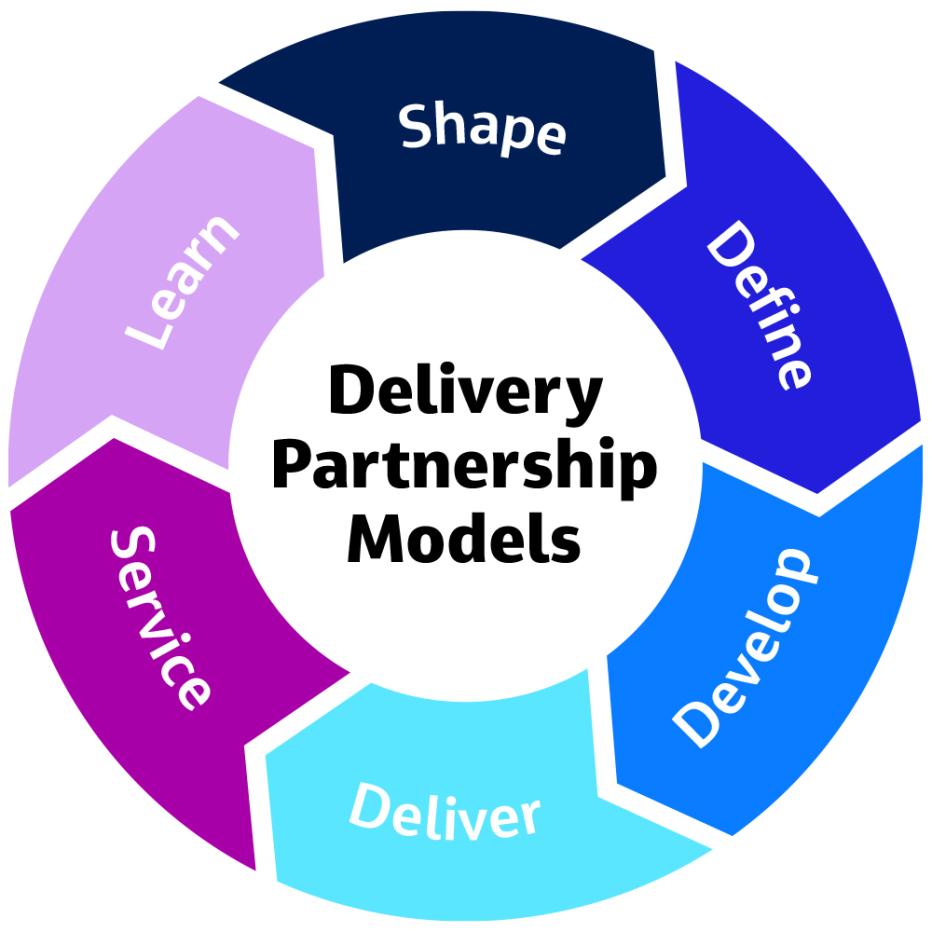Delivery Partners Deliver Successful Program Management through Collaboration: A Conversation with Chrissy Thom
SVP Chrissy Thom shares how delivery partners play an important role in the successful delivery of programs.

Around the world, infrastructure projects are becoming increasingly complex, making collaborative and transparent project delivery even more crucial. Jacobs is at the forefront of reshaping how large programs are delivered.
We’re tackling programs with collaboration front of mind — and we’re doing this through our delivery partner model. What’s a delivery partner? Answer - a strategic collaborator that works closely with the project and program from inception to completion, acting as an extension of the owner's team, and working closely toward successfully delivering project outcomes while sharing both the risks and the rewards.
Did you know? By effectively using the delivery partner model for the venues and infrastructure of the London 2012 Olympic and Paralympic Games, the program was delivered a year ahead of schedule and 10% below budget. We will apply these best practices and lessons learned as we kick off our next delivery partner program – Frederick Douglass Tunnel.
Through a series of conversations with several of our program delivery leaders, Chrissy shares reflections on the vital role that our delivery partner model plays in delivering programs.
The fundamental steps of building a delivery partner strategy include - shape, define, develop, deliver, service and learn.

Shaping program success
With large infrastructure programs, technical and delivery challenges are complex. It's a common misconception that a delivery partner’s focus should solely on these challenges and overlook broader issues that owners need to address to establish, develop and deliver a program effectively. A true delivery partner works collaboratively with an owner and their supply chain throughout the program's lifecycle. They navigate program complexities; address sponsor, organizational, and stakeholder interfaces; and makes sure the necessary approvals are obtained while addressing more traditional delivery challenges.
As a natural extension of the project owner, a delivery partner helps shape a program by leveraging their experience to achieve shared program outcomes. This requires a shared vision and values, along with a culture of transparency and mutual trust, where the owner and their delivery partner understand the scope, respective roles and allocation of risk between them.
Defining a program
Once an owner has shaped their program vision and established the broad management framework, they need to define the structure to deliver the desired outcomes. While defining a program, the owner and delivery partner navigate a variety of interfaces, stakeholders and challenges the program may address throughout its lifecycle. The core objective is to define the comprehensive program lifecycle, so it delivers excellent performance, social equity, environmental sustainability and a cultural and economic legacy.
The required level of skills and disciplines to successfully deliver programs are increasingly more sophisticated and challenging to resource. Challenges can be addressed through a collaborative approach to delivery, where delivery partnerships are leveraged to bring in the relevant expertise early in the definition stage of a program and are also incentivized to achieve shared long term program outcomes.
Developing a program
Once a program’s vision and objectives are established, a delivery partner collaborates with the owner to guide the program’s development through the various delivery phases.
Developing a successful program involves several key elements:
- Fostering a collaborative and adaptable culture.
- Establishing a robust and aligned baseline.
- Making informed decisions within a transparent governance and management framework.
This approach helps identify (and mitigate) risks and encourages pragmatic, innovative value-added solutions.
Jacobs Program Management Lead, Americas - East Maher Al Ajam adds,” Controlled risk-taking and experimentation in a structured environment can lead to breakthroughs, and exploring alternative delivery models while encouraging innovative approaches can greatly satisfy the program's need for efficiency and adaptability.”
Delivering assets
Once a program is through the development phase the delivery partner, in collaboration with the owner, will focus on delivery of program assets and achieving program outcomes.
A delivery partner has a distinct advantage when delivering a program — since they’ve engaged with the owner early, they are deeply integrated in planning and development. The delivery partner's performance is often aligned to the program's success, measured by key performance indicators (KPIs). This alignment of goals creates a powerful incentive for the delivery partner to proactively leverage their extensive resources and skillsets to achieve the outcomes and objectives. It also encourages the delivery partner to share in the risks associated with the program, fostering a sense of shared responsibility with the owner.
When asked about the challenges of the delivering assets phase, Fred Tallarico, Jacobs regional director for alternative delivery projects, shares that “By functioning as an integrated team alongside the client, the delivery partner can draw upon a diverse pool of resources and talents, both locally and internationally, to address resource constraints effectively and efficiently.”
Service initiation
The service initiation stage in large program delivery refers to when the program transitions from delivery, testing and commissioning into its operational and maintenance phase. The focus shifts from building and fit out to handover and assurance. The biggest challenge during this stage is integrating multiple and often complex systems.
The delivery partner can provide services within the areas of an owner’s organization tasked with overseeing program and systems integration, so that program and systems integration remain controlled from early design approvals through to detailed design, construction, fit out, testing and commissioning, handover, and assurance, and finally the customer experience.
“A delivery partner is a proven mechanism for driving program outcomes and benefits, through proactive resilience planning in preparation for not only the close out phases, but any major stage during completion,” explains Jacobs Program Director Gary Milligan.
Learning legacy
So now that we delivered a program and are running service, what can we learn from the experience?
Leveraging and embedding industry best practices can accelerate program schedules and unlock new industry innovation, including technologies and digital practices. Appointing a delivery partner early in a program result in a learning legacy approach and capture and dissemination of best practices within the industry.
Delivery partners focus on integrated teams to draw a strength of skillset with a focus on collaboration., Drawing on this collective strength of skills and knowledge is key to success by learning from previous pitfalls and challenges but also from things that worked well.
Jacobs Senior Program Manager Caitlin Johnson shares, “It is critical that programs develop their approach to knowledge management and learning legacy right at the beginning – in this way they make sure best practices are embedded before and during delivery and lessons learned and innovation are shared back to industry through to completion. “
A delivery partner plays a pivotal role in helping an owner deliver a large program, helping create a legacy for the owner, their supply chain, the communities where the program is delivered and the customers they serve.
About the author

As Senior Vice President & General Manager, Americas - East, Chrissy Thom challenges today by being an authentic leader with demonstrated strength in global and cultural inclusion and connectivity. She brings experience grounded in all facets of our business – operations, sales, project delivery and solutions & technology.
Meet our team
-

Fred Tallarico, Regional Director Alternative Delivery Projects
-

Maher Al Ajam, Program Management Lead, Americas East
-

Neil Walker, Vice President - U.S. & Canadian Program Management
-

Yuval Cohen, Global Principal
-

Steve Lee, Program Manager - Program Management
-

Gary Milligan, Program Director
-

Caitlin Johnson, Senior Program Manager
Future Foundations.
Co-creating the world to come

From developing climate resilience and transitioning to a low-carbon future, to modernizing and transforming infrastructure, governments and businesses face critical challenges. How they respond will define our future.
As our clients navigate these challenges, we help them think differently – working together to pioneer tomorrow's infrastructure solutions and build the foundations for a prosperous, secure future.


















































